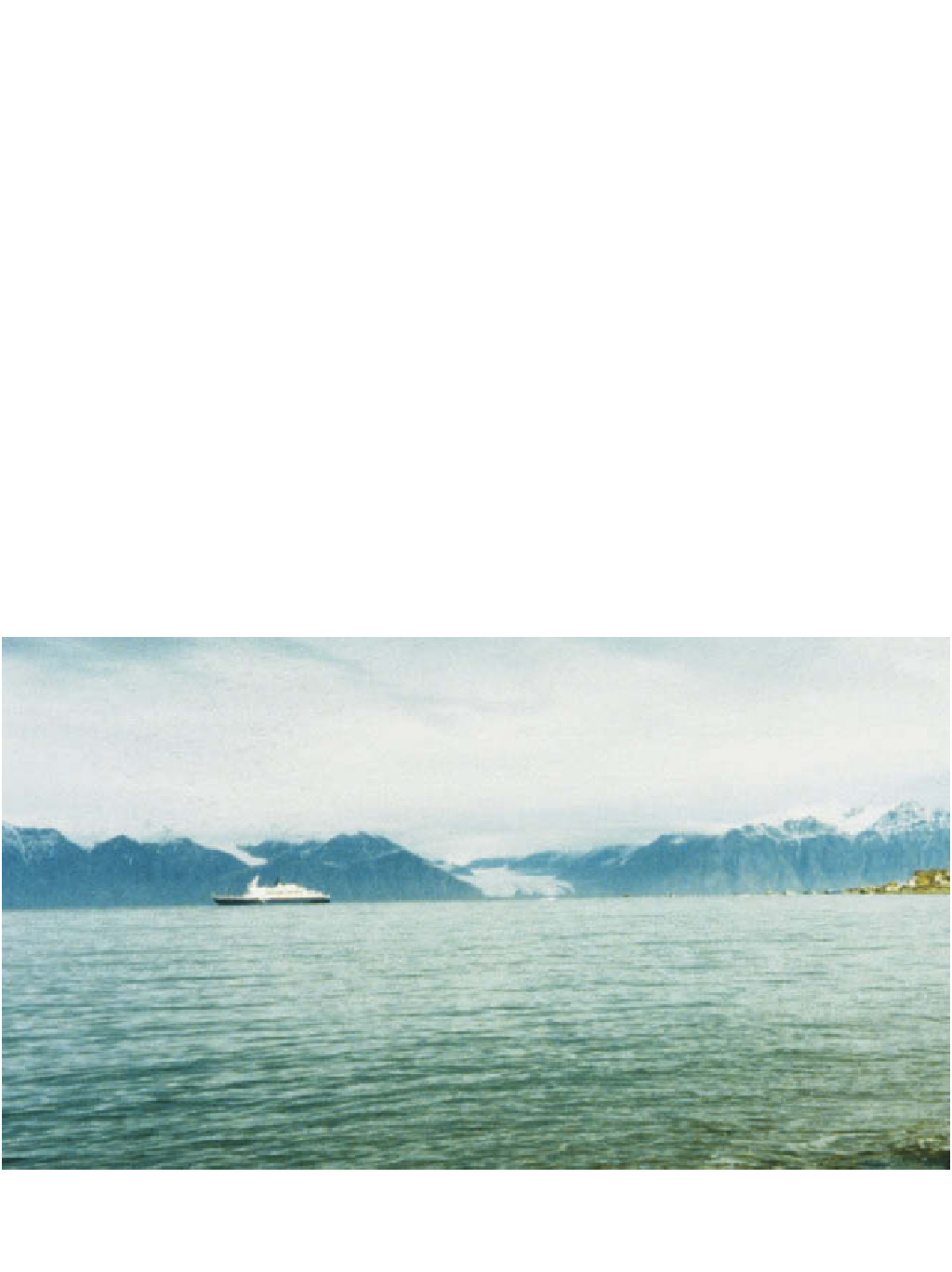Geoscience Reference
In-Depth Information
months when air currents are more favourable. During the
winter the acids accumulate in the snow; when released
by spring melt they leach soils and acidify lakes. Most
pollutants enter the Arctic Ocean and the Antarctic land
mass by air currents.
Cruise
tourism has many more impacts. There are real
risks of water pollution from diesel spills and waste and
sewage disposal. Any shipwrecks are likely to cause
considerable disturbance to wildlife, whether directly from
fuel spills or indirectly. Although no permanent land-
based construction is required, repeated visits can create
pressure on vegetation and raise problems of waste
disposal. There is also the possibility that exotic plant
species, bird and plant diseases may be introduced (
Plate
Land-based tourism
has potentially the greatest impact
on the polar environment, owing to the need for a full
range of support facilities for transport (airstrips, roads,
harbours), accommodation (hotels, lodges, camp sites)
and the usual range of tourist attractions (shops, trails).
There is increased competition with native flora and fauna
for ice-free land and fresh water. Water pollution, the
disposal of rubbish and sewage, and disturbance of the
breeding and feeding patterns of wildlife are all direct
negative impacts. Unsuitable travel through sensitive areas
or uncontrolled souvenir hunting and trampling can
destroy sensitive ecosystems. Disruption of permafrost
could occur in extreme cases.
Environmental impacts of polar tourism
Polar regions have become an important destination for
tourism as visitors are attracted by the wildlife, wilderness
values, native cultures and sites associated with historical
exploration. As with all tourism, however, there is a danger
of the tourists destroying the very thing which attracts
them to the area. The three types of tourism are over-
flights, cruise visits and land-based visits.
Overflights
are used in both Antarctica and the Arctic.
The impact is greater from low-flying aircraft. Animals
and birds can be greatly disturbed, with heavy loss of
breeding success. In the north the main wildlife concerns
relate to ungulates such as caribou, as well as birds. In
Antarctica low overflights of penguin colonies have
brought destruction by causing panic, desertion and
predator attack. Hydrocarbon residues from aircraft fuel
can be scattered over a wide area by wind.
Plate 24.23
Cruise ships are now a frequent sight in polar waters. Here the Russian cruise ship Ala Tarasovaenters Lancaster
Sound, Canada, in August. View from Baffin Island towards the sensitive bird sanctuary of Bylot Island in the background.
Photo: Shirley Sawtell










































